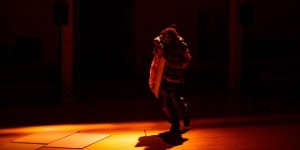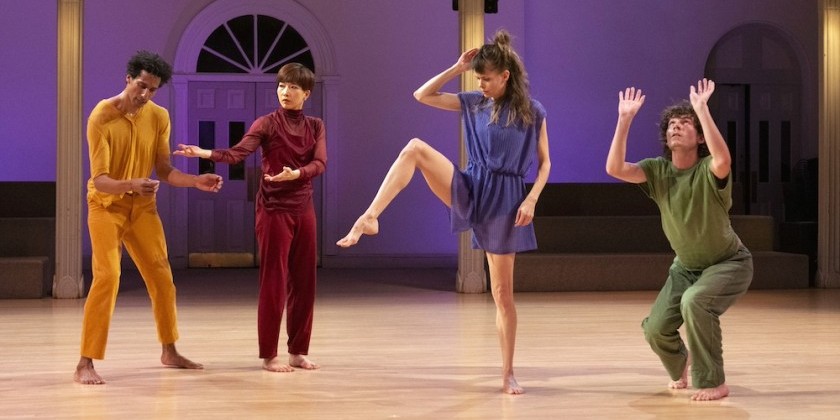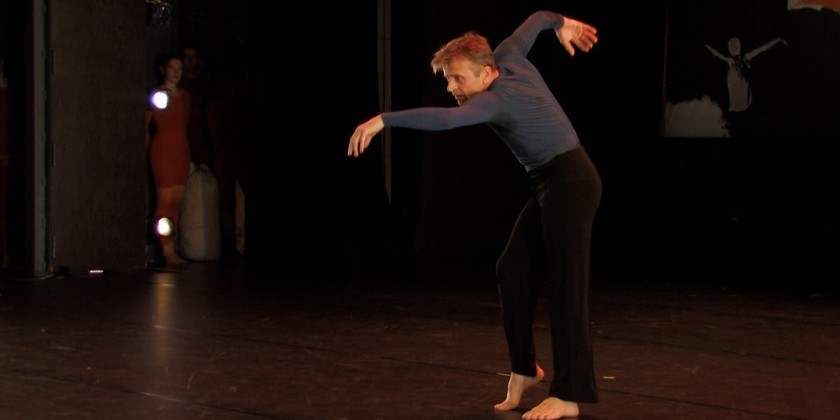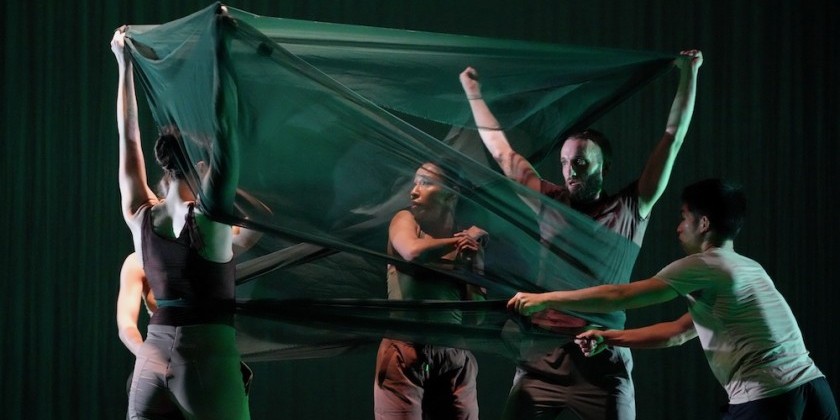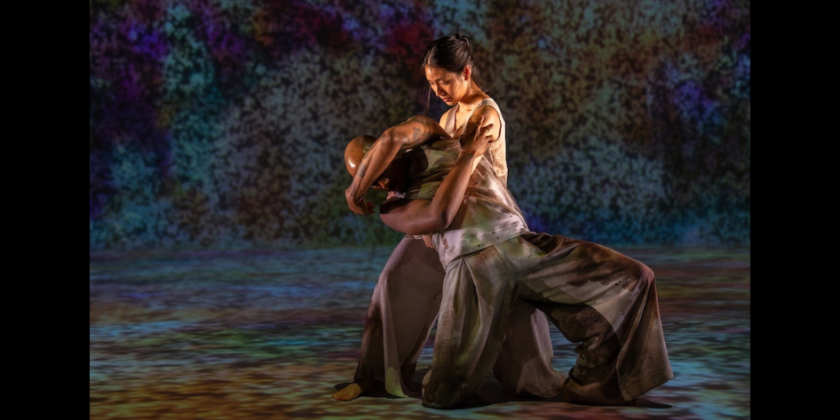Impressions of Douglas Dunn + Dancers’ "Antipodes" at Danspace Project

Choreography: Douglas Dunn
Presented by: Danspace Project
Dancers: Jules Bakshi, Alexandra Berger, Emily Pope, Pau Singh, Jin Ju Song-Begin, Jake Szczypek, Timothy Ward, Christopher Williams. With Grazia Della-Terza as The Moon, & Douglas Dunn as The White Dwarf
Design: Mimi Gross
Costume Construction: Jennifer Fadel, Sue Julien, Quinndustry, Zak Vreeland
Set Construction: Mike Levy, Mimi Gross
Lighting: Carol Mullins
Original Score and Performance: Steven Taylor, Laure Brenneman
Additional Music: Shawn O’Sullivan, Katie O’Sullivan
Douglas Dunn is reputed for his vivid imagination. Since 1976, he has delighted audiences with his fantastical work. Antipodes, Dunn’s latest exploration, baffles and thrills with its kaleidoscope of bright colors and complex shapes.
The lights come over the vast, sacred Danspace Project to reveal a delightful garden of stand-up cardboard birds, perhaps three feet in height, evenly spaced among eight dancers. The audience surrounds the performance on three sides. We are so close to the performers that it feels as if we have stumbled into their magical world. A clothesline hangs high above our heads, from which dangles dozens more life-sized white-bird cutouts.
Like the vibrant props, the dancers are distinguished by different patterns and markings on their intricate and exquisite costumes: a contrasting band, a neckline of black and white stripes, striking plumage. Watching the hues mix is one of the highlights of the work.
Antipodes unfolds in sections. Rather than a clear beginning, middle, and end, the work provides segmented glimpses into Dunn’s strange world, followed by blackouts. Some of the episodes are more stagnant, while others contrast with broad, sweeping movement. Phantasmagorical patterns constantly shift our focus to the dancers, who use quick, precise footwork to weave amongst each other. Dunn danced for Merce Cunningham from 1969-1973, and the influence is strong, particularly in the challenging balances, balletic leaps, and nuanced articulations of the spine.

Some sections of the piece are purely musical, with no dancing. Steven Taylor stands underneath the church’s majestic arch, bounded by a cardinal and a robin. Alone with his guitar, he performs an airy ditty.
Birds inform the movement itself. In the opening, the dancers fold and unfold their limbs like long, elegant wings, and they freeze gracefully on demi-pointe, as though perched on a high tree branch.
In a satisfying quadrant of parallel duets, four couples perform geometric movement by balancing in angular shapes on top of one another. There is a subtle eroticism in the way they crease and melt into one another, like colors merging and blending, mimicking nature’s intricacy.
The only real narrative shows up in a recurring duet between “The Moon,” danced by Dunn’s long-time collaborator Grazia Della-Terza, and Dunn’s character, which is puzzlingly described in the program as “The White Dwarf.” Della-Terza wears a circular headpiece that bobbles atop her head. Each time she enters, a painted slice of a circle on that headpiece depicts a different phase of the moon. Her regal presence projects her high status in this fanciful world.

Perhaps most bewildering is Dunn’s transformation throughout the piece. First, he enters as an oafish monster in a costume modeled after a pre-Colombian statue, his head obscured by a bulky brown mask. Like a caveman, he rolls in what looks like a massive boulder. Next, he is a smaller reptile-like character, wielding a smaller green boulder. Finally, he enters as himself, clad in black dance clothes, completing the transformation from statue to monster to human.
In Antipodes, Dunn has assembled a lively patchwork of collaborators. As revealed in the post-show discussion, they were only given the title to work with. Because Antipodes means opposites, Steven Taylor and Laure Brenneman composed an ambient, church-like score of new and old effects. Designer Mimi Gross googled Antipodes to find the Antipode Penguin, from which arose the theme of birds. These reflections strongly shaped the outcome, sometimes beautifully and sometimes confusingly.
Our analytical minds search for plot development and a through-line. But Antipodes appeals so visually that we ultimately just immerse ourselves in the pure, unbounded fantasy. Trying to dissect Dunn’s work is like trying to make sense of a strange dream. The best thing to do is simply go along for the ride.
The Dance Enthusiast Shares IMPRESSIONS/ our brand of review and Creates Conversation.
Check out our other IMPRESSIONS here, including a 2014 review of Douglas Dunn & Dancers
Share your #AudienceReview of this show or others for a chance to win a $75 giftcard to Trader Joe's.






